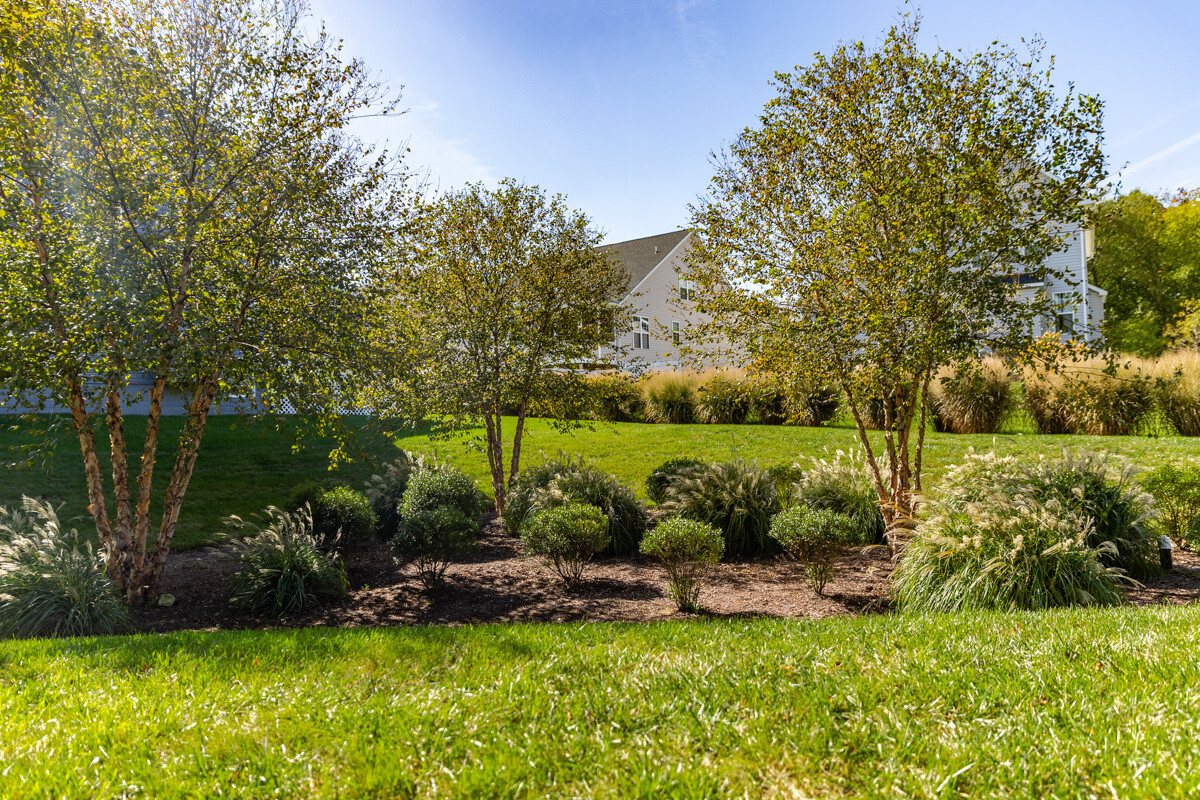
12 Best Washington DC & Baltimore Native Plants for Commercial Landscaping
If you don’t have at least a couple DC native plants on your commercial property, you’re missing out.
Native plants are more popular than ever, for their low maintenance, their water-saving qualities and the tasty buffet they offer to struggling pollinators who could use a helping hand.
What are the best Washington DC and Baltimore native plants for commercial properties? You have lots of choices, from stunning flowering trees like Eastern redbud to graceful ornamental grasses like red switchgrass and Northern sea oats.
Let’s learn more about native DC plants, including:
First, Why Use Native Plants in DC and Baltimore?
Serviceberry
Eastern Redbud
Flowering Dogwood ‘Cherokee Princess’
Holly 'Gem Box'
Virginia Sweetspire
Winterberry Holly
Red Switchgrass 'Shenandoah
Blue Star
Northern Sea Oats
Coneflower
First, Why Use Native Plants in DC and Baltimore?
So many good reasons:
- They need less maintenance. Native plants are plants that have grown in a particular area for thousands of years, without human introduction, so they automatically love living on your property. That means they need less care from you. They naturally resist diseases and pests. They’re happier and healthier, needing less fertilizer and water than non-natives.
- Municipalities often require that landscaping for commercial properties incorporate native plant rain gardens in new developments to help with stormwater management. Much of the Level Green service area is in the Chesapeake Bay watershed, which needs to be protected from runoff.
- Native plants protect against invasive plants. When plants are introduced that aren't native to your area, they can become invasive, choking out beneficial plants that birds and animals need to survive.
- Layers of native plants shelter birds and feed wildlife. Plant layers of native species, from low-lying vines to knee-high perennials to canopies of trees. Native birds love the protective shelter this provides for breeding. Include a bit of everything, from flowers to grasses to shrubs, for the best bird appeal. Native plants offer a free buffet of berries, nuts and seeds, and some native blooms provide nectar for hummingbirds and bees.

Check out some of the best native plants for Washington D.C., Baltimore, and Virginia, including a few Level Green team favorites:
1. Serviceberry
Level Green founding member Doug Delano loves this native tree, also called shadbush or juneberry.
These native DC plants offer impressive four-season interest, with beautiful white blossoms in the spring, fruits in the summer, colorful foliage in the fall, and attractive bark color in the winter. Birds love its purplish-black fruit.
Serviceberry adapts to a range of sun exposure, from full sun to partial shade, but full sun will produce more berries.
Plant one tree as a single striking specimen, or group several of them together to form a small grove.
A serviceberry also looks great underplanted with low-growing annuals, perennials, bulbs, or ground covers that flourish in light shade.

2. Eastern Redbud
Abundant rosy-lavender flowers appear in early spring, in one of the season’s most dramatic displays. That’s followed by pretty heart-shaped lime green leaves in summer. Those leaves turn shades of orange, gold and yellow in autumn — an explosion of hues, all at once.
These DC native plants, which are also native to Baltimore and Virginia, prefer full sun to partial shade. Six to eight hours of sun a day is ideal.

3. Flowering Dogwood ‘Cherokee Princess’
This beauty is often called the most lovely of the native U.S. flowering trees. Each pretty white flower cluster is surrounded by four showy, white, petal-like bracts which open flat, giving the appearance of a single, large, 4-inch wide white flower. Birds love its bright red fruit.
This dogwood does best in partial shade. It loves rich, acidic soil but doesn’t like standing water.

4. Holly 'Gem Box'
A great Washington DC native plant alternative to boxwood, this new dwarf, broadleaf evergreen is a holly, but looks more like a boxwood.
It's great as a small evergreen hedge in a low-maintenance commercial landscape.
Level Green account manager Josh Burton likes this variety because it’s not susceptible to the pests and diseases that often plague boxwood. It’s less expensive than boxwood, he says, and drought tolerant.
It needs part sun to full sun and is super versatile. Use it as a border plant, in a container, as an edging plant, in mass plantings or as a striking stand-alone focal point.
5. Virginia Sweetspire
This compact DC native shrub, which is also native to Baltimore and Virginia, is a favorite of Level Green branch manager and avid gardener James Kole, who loves that it’s adaptable to a wide range of growing conditions, including drought.
It produces arching white floral sprays from late spring to mid-summer. In autumn, the leaves turn red, orange, and gold.
Virginia sweetspire is great for erosion control or enticing helpful pollinators like bees and butterflies. It also produces edible seeds for birds and is deer-resistant.

6. Winterberry Holly
A profusion of bright red berries brightens the winter landscape and provides food for hungry birds. Note that a male pollenizer, such as ‘Jim Dandy’ Holly, is needed in order to produce berries.
These Washington DC native plants can be grown in full sun or partial shade, but they’ll produce more of those pretty berries with more sun.

7. Red Switchgrass 'Shenandoah'
This ornamental grass is another favorite of Kole. Its upright foliage becomes red tinted during the growing season, culminating in a dazzling fall show.
A great native that’s drought tolerant once established, it wows you with a pretty reddish-purple seed head.
These native DC and Virginia plants are great grown as mass plantings or dotted throughout your commercial landscaping for texture and movement.
It grows best in full sun, and can tolerate poor soils. Let it remain during the winter so birds can enjoy those seed heads and wait until spring to cut it back.
8. Blue Star
A graceful and long-lived DC native plant, this offers very fine foliage and clusters of steel blue flowers in May and June. Then, in autumn, enjoy its stunning golden fall color.
The flowers provide an important nectar source and the foliage is a larval food for various butterflies. Hummingbirds, bees, hummingbird moths, and several other helpful pollinators are also drawn to the plant.
9. Northern Sea Oats
Also known as river oats, this Washington DC native grass produces a multitude of beautiful pale green seed heads in midsummer that flutter in the breeze and turn purplish bronze by late summer. They look stunning when backlit by the sun.
It thrives in just about any situation: sun, shade, moist or dry, making it a great landscape grass for the often challenging conditions of commercial properties.
It will spread and reseed, so give it space.

10. Coneflower
Part of the fun of this DC native flower, which also thrives in Virginia, is the great variety names, like ’PowWow Wild Berry’, and ‘Kim’s Knee High.’ All these long-blooming, colorful coneflowers attract butterflies and birds.
Once established, they’re fairly drought tolerant but need more frequent irrigation during dry spells. Here’s a great bonus: it actually does best with little or no fertilizer.

What Are the Best DC and Baltimore Native Plants? Trust Level Green
There are so many great reasons to add DC native plants to your commercial property landscaping, and so many impressive options to choose.
We’ll help you plan your commercial landscape with the native plant varieties perfect for your property.
Level Green Landscaping provides commercial landscaping maintenance services in Washington DC, Virginia and Maryland, including low-maintenance native plant landscaping that help you save money and help the environment.
We’d love to suggest some native beauties for your property. Then, while you enjoy the beauty, you can also feel great about creating less maintenance on your commercial property.
If you’re not already a Level Green Landscaping client, we’d love to add you to our growing list of happy customers.
Our focus is on commercial properties like offices, mixed-use sites, HOAs, municipalities and institutions in Maryland, Washington DC and parts of Virginia.

Contact us at 202-544-0968. You can also request a free consultation online to meet with us one-on-one.
Ready to try some of our favorite native plants? We’d love to hear from you.
Image sources: amelanchier x grandiflora, eastern redbud, flowering dogwood, virginia sweetspire, winterberry holly, coneflower

Douglass Delano
Doug Delano (and Bill Hardy) opened Level Green Landscaping LLC in 2002 to offer Washington DC, Maryland and Virginia reliable commercial landscape maintenance services.


